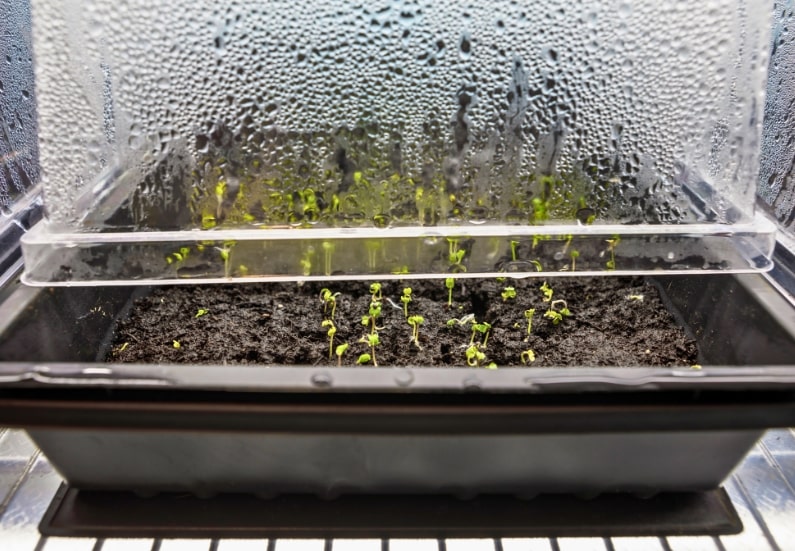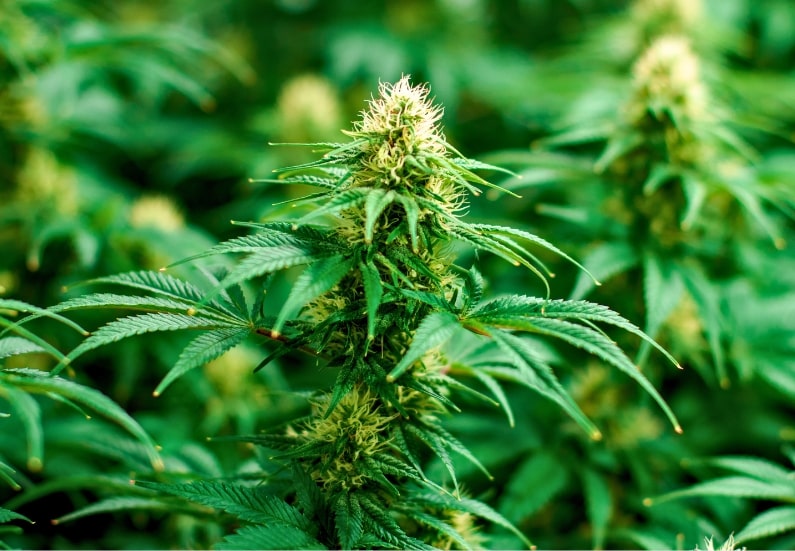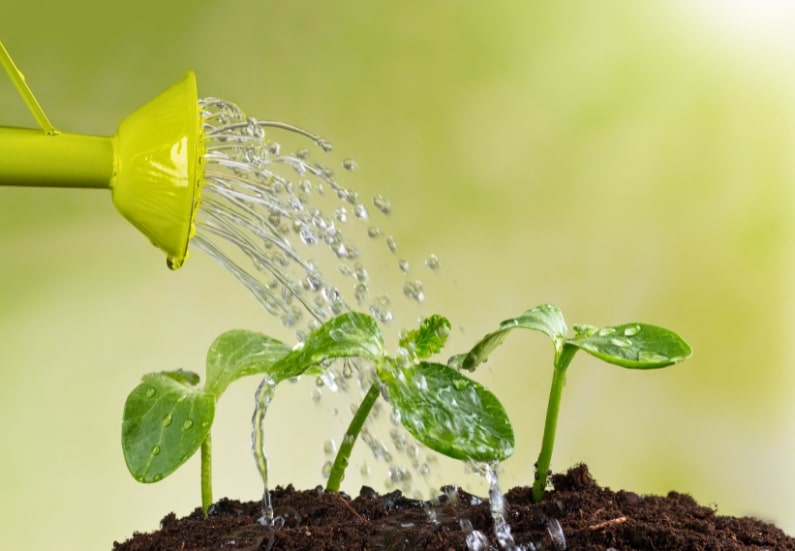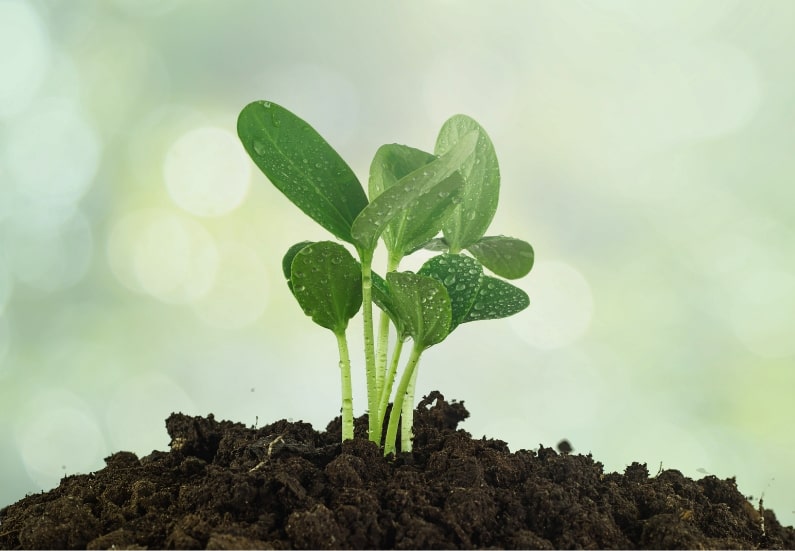The right humidity level is crucial for your plant’s health and growth. Too much moisture in the air can lead to mold and mildew, while too little can result in wilting and dryness. Finding the perfect balance is critical to ensuring your plants thrive. In this article, we will explore the ideal humidity levels for different types of plants and provide tips on how to regulate the moisture in your indoor garden effectively. Following these guidelines can create the optimal environment for your green friends to flourish.
In this article, we’ll dive into plant humidity and help you understand what your plants need to thrive. Let’s get started!
Understanding Plant Humidity
First things first, let’s talk about what humidity is. Humidity refers to the amount of moisture in the air, and it plays a crucial role in the health and growth of your plants. Different plants have different humidity requirements, so it’s essential to understand what your specific plants need.
Why Is Humidity Important for Plants?
In transpiration, plants absorb water through their roots and release it through tiny pores on their leaves. When the air around a plant is too dry, the rate of transpiration increases, which can lead to wilting and dehydration. On the other hand, if the air is too humid, the plant may struggle to release excess moisture, resulting in root rot and fungal diseases.
Ideal Humidity Levels for Different Plants
Now that you understand why humidity is essential let’s discuss the ideal humidity levels for some common types of indoor plants. Remember that these are general guidelines, and it’s always best to research each plant’s specific humidity requirements.
Tropical Plants
Tropical plants like Monstera, Calathea, and Peace Lily thrive in highly humid environments. To mimic their natural tropical habitat, the aim is to keep the humidity around these plants between 60 and 80t. You can use a humidifier or place a water tray near the plants to increase humidity.
Cannabis
When cultivating Cannabis indoors, understanding and controlling humidity is crucial to ensure healthy growth and potent yields. Cannabis plants have specific humidity requirements that vary through their different growth stages.
Seedling Stage
During seedling, cannabis plants benefit from higher humidity levels, as their root systems are not yet fully developed. Aim for a humidity level of around 75-80%. This high humidity helps the seedlings absorb water through their leaves while their roots grow.
Vegetative Stage
As cannabis plants enter the vegetative stage, they can tolerate slightly lower humidity levels. Aim for a humidity level between 45-55% during this phase. This range helps promote strong leaf growth and prepares the plant for the flowering stage. Proper ventilation is also crucial during this stage to prevent the growth of mold and mildew.
Flowering Stage
Humidity needs to be controlled more stringently during the flowering stage. High humidity can lead to bud rot, which can devastate your crop. Aim to reduce humidity to around 35-45%. This level helps prevent mold and encourages the plants to produce trichomes, which are tiny, crystal-like structures that contain cannabinoids like THC and CBD.
Late Flowering Stage
During the late flowering stage, reducing humidity even further, down to about 30-40%, is beneficial. Lower humidity levels during this phase help increase resin production, enhancing the potency and flavor of the final buds.
Succulents and Cacti
On the other end of the spectrum, succulents and cacti prefer low humidity levels. These plants are adapted to arid environments and thrive in dry conditions. Aim to keep the humidity around these plants between 30-40% to prevent overwatering and root rot.
Ferns
Fernslovef humidity and moisture. To maintain their lush foliage and prevent drying out, aim to keep the humidity around ferns between 50-70t. Misting the leaves of ferns regularly can help increase humidity levels.
Orchids
Orchids are exotic plants that prefer moderate to high humidity levels. To promote healthy growth and vibrant blooms, aim to keep the humidity around orchids between 40% and 60%. Orchids are susceptible to changes in moisture, so it’s essential to maintain consistent levels.
How to Measure Humidity Levels
Now that you know the ideal humidity levels for different types of plants, you may be wondering how to measure humidity in your home. Fortunately, there are several ways to do so accurately.
Hygrometers
A hygrometer measures humidity in the air. You can purchase one at your local garden center or online. Place the hygrometer near your plants to monitor humidity levels regularly and adjust as needed.
DIY Methods
If you don’t have a hygrometer, there are DIY methods for gauging humidity levels. For example, condensation on windows or mirrors can indicate high humidity, while dry, cracking soil can signal low humidity.
Smartphone Apps Smartphone apps are also available to measure humidity levels using your phone’s sensors. While these apps may not be as accurate as a hygrometer, they can still give you a general idea of the humidity in your home.
Tips for Adjusting Humidity Levels
If you find that the humidity levels in your home are not ideal for your plants, don’t worry! You can adjust humidity levels in several ways to create a more suitable environment for your green friends.
Humidifiers
Using a humidifier is one of the most effective ways to increase humidity levels in your home. Place the humidifier near your plants and adjust the settings to maintain the desired humidity level.
Pebble Trays
Pebble trays are a simple and cost-effective way to increase humidity around your plants. Fill a shallow tray with water and place pebbles or gravel in the tray. Place your plant pots on top of the pebbles, making sure the pots do not come in direct contact with the water.
Grouping Plants Together
Grouping plants can create a microclimate with higher humidity levels. When plants are placed close together, they release moisture into the air through transpiration, creating a more humid environment.
Misting
Misting is a popular method for increasing humidity levels around plants. Use a spray bottle to mist the leaves of your plants, paying attention to the undersides of the leaves where the stomata are located. Misting can be especially beneficial for plants that require high humidity levels.
Signs of Incorrect Humidity Levels
Monitoring the humidity levels around your plants regularly is essential to ensure they are thriving. Here are some common signs that your plants may be experiencing incorrect humidity levels:
Low Humidity
- Wilted or yellowing leaves
- Dry, crispy leaf edges
- Slow growth
- Increased susceptibility to pests
High Humidity
- Mold or mildew on the soil or leaves
- Yellowing or drooping leaves
- Root rot
- Fungal diseases
If you notice any of these signs, you must adjust the humidity levels promptly to prevent further damage to your plants.
Final Thoughts
Congratulations! You are now a humidity expert in caring for your plants. Remember, each plant is unique and may have specific humidity requirements, so it’s essential to do your research and observe how your plants respond to changes in humidity levels. With some knowledge and care, you can create the perfect environment for your plants to thrive. Happy growing!














